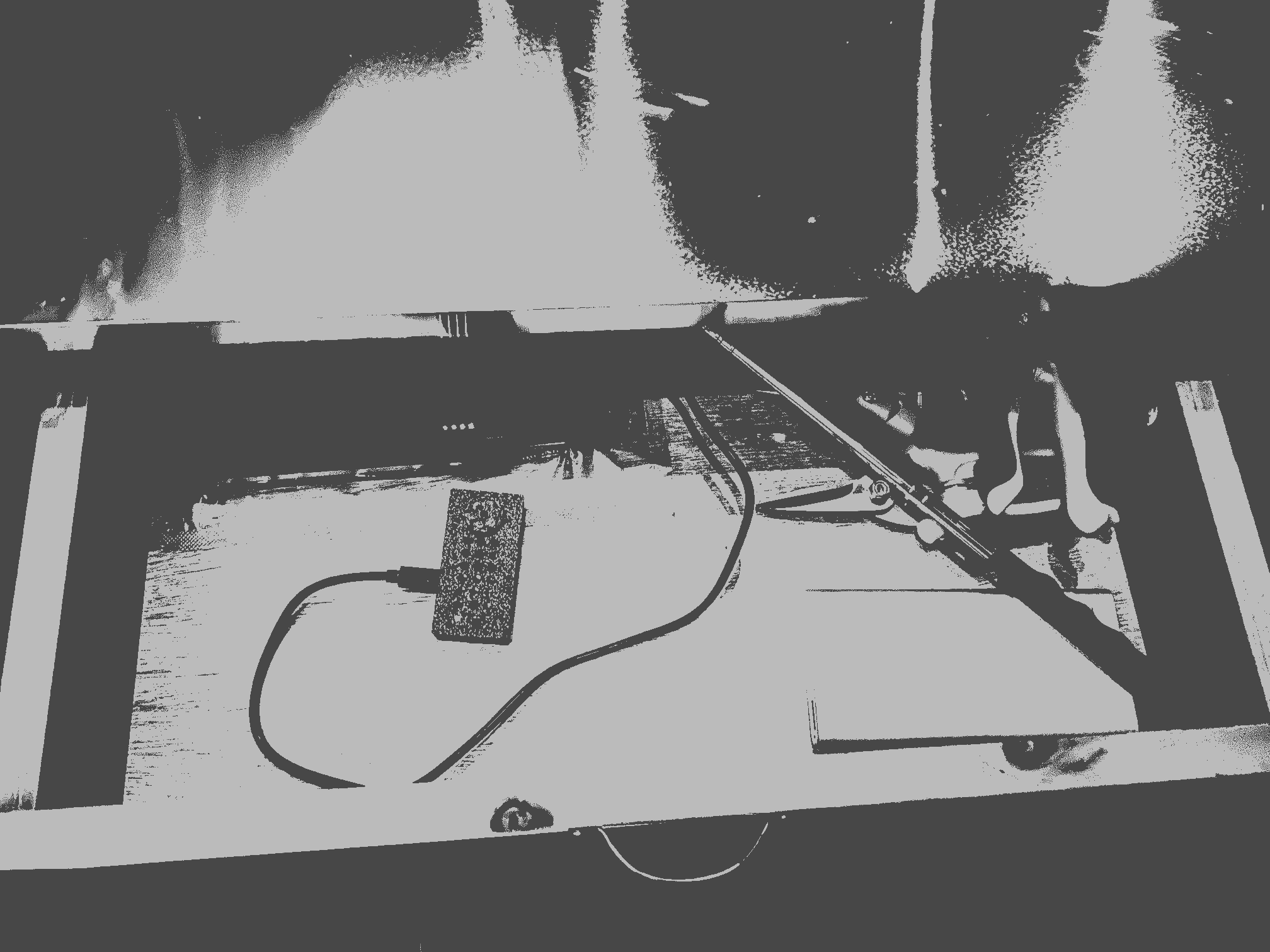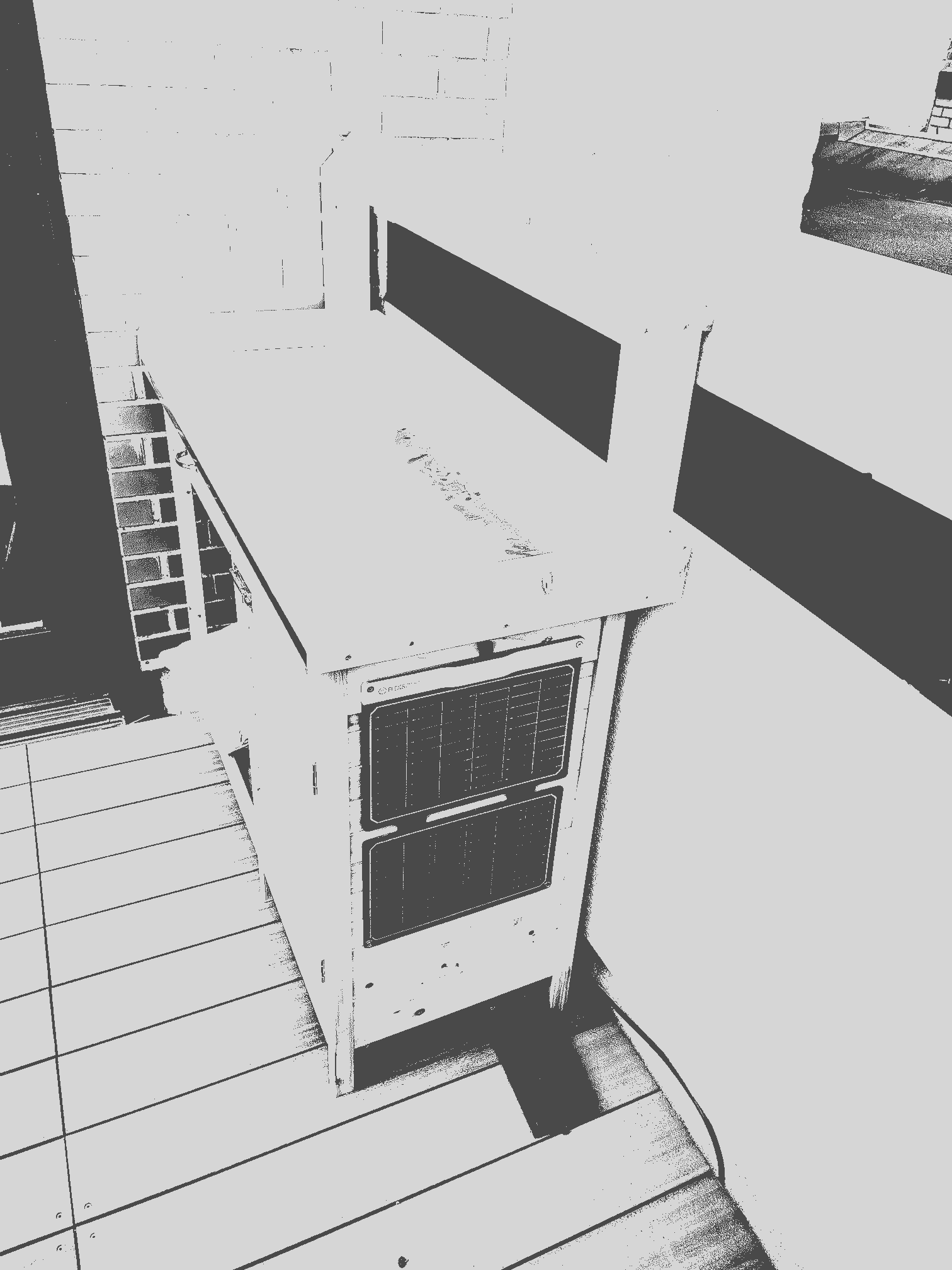
Hello from my solar-powered website in Brooklyn!
Due to the nature of the sun, the earth’s rotation, its orbit around
said sun and the vagaries of a purely solar-powered anything, this site
may not always be available.
This site is currently runnning on a reasonably weather-protected
Raspberry Pi Zero on my terrace, powered by a 20W solar panel and
PiSugar battery module. It tries to shut itself down when the battery
reaches a certain threshold and wake itself up at sunrise. A crontask on
the Pi runs a script to calculate sunrise based on its current
location.
It’s all a bit of a work-in-progress as I figured out how to make the
idea of a consistently available, self-managing, solar-powered website a
reality. To date, I have enjoyed that this project seems to have no
bottom.
If you’re reading this, that means something about this
setup is working! While it’s here and you’re here, please enjoy some fun
stats about this site:
Server Info
- Uptime: The server has been up 1 hour, 18
minutes
- Last boot: It was last booted at 2025-04-01
00:41:55
- General Availability: About 6.2% over the last 24
hours
- Scheduled Wakeup Time: The server is going to try
and wake itself up at if it can
- Shutdown Threshold: The server is going to try shut
itself down when the battery hits %
- Core Voltage: volt=1.2563V
- Temperature: temp=44.0’C
- Throttles: throttled=0x0
- Battery: 62.76671
- Voltage: 3.6821337
- Power Plugged: false
- Charging: false
- Clock Frequency: frequency(48)=600000000
Energy Consumption Estimates
- Number of CPU cores: 4
- Uptime: 1.30 hours
- Idle Time (per core): 1.27 hours
- Active Time: 0.04 hours
- Idle Energy: 0.63 Wh
- Active Energy: 0.07 Wh
- Total Energy: 0.70 Wh
These numbers are based on the power
draw tables described here for the Raspberry Pi Zero, assuming
typical idle and stress workloads.
Weather Info
Current data from a weather station near me in New York, somewhere in
Central Park. Courtesy of the National
Weather Service API.
- Time: 2025-04-01T04:51:00+00:00
- Description: Fog/Mist
- Temperature: 14.4°C (57.9°F)
- Dew Point: 13.3°C (55.9°F)
- Relative Humidity: 93.1%
- Wind Speed: 0.0 km/h
- Wind Direction: 0°C
- Visibility: 8.0 km
- Sea Level Pressure: 1001.4 hPa
AI-Assisted Analysis
Caveat emptor! Word-calculators are really not the smartest
way to forecast the weather and assess the health of a system…
But it’s still fun to see how it fares :)
At the Moment
The Raspberry Pi Zero is operating well with an uptime of 1 hour and
18 minutes, a stable CPU temperature of 44.5°C, and no signs of
throttling, while maintaining a manageable CPU load of 28.6% with
adequate memory and disk space usage. The voltage level of 1.2563V
indicates that the power supply from the solar bank is sufficient for
its current demands.
The output provided is a snapshot from the top command,
which offers a live view of system processes running on a Linux-based
operating system—in this case, it appears to be a Raspberry Pi (Pi) that
is running a web server. Here’s a detailed analysis of the key
components:
System Summary
- Time: The system has been running for 1 hour and 18
minutes.
- Users: There are currently 2 users logged in.
- Load Average: The load averages over the past 1, 5,
and 15 minutes are 0.06, which indicates low processor load. A load
average of less than 1 per core is generally a sign that the system is
under minimal stress, suggesting that your Pi can handle more tasks
concurrently without performance degradation.
- Threads: There are 284 threads running in total.
- 3 are currently in a running state.
- 281 are sleeping, meaning they are waiting for some event to
complete.
- There are no stopped or zombie threads, which is good.
CPU Utilization
- %Cpu(s):
- User space (us) usage: 8.3%
- System (kernel) usage (sy): 12.5%
- Idle (id): 75.0%
- Wait (wa): 4.2% (indicating I/O wait, where processes are waiting
for I/O operations like disk reads/writes).
The CPU usage is quite low, with a significant amount of idle time,
indicating that the system is not under significant load.
Memory Usage
- Total Memory: 425.7 MiB;
- Free Memory: 142.7 MiB;
- Used Memory: 170.7 MiB;
- Buffer/Cache: 161.1 MiB.
It looks like memory usage is healthy, with over one-third of the
total RAM still free. The buffer/cache memory indicates that the system
is efficiently managing memory resources, potentially holding data in
memory to speed up access.
Swap Usage
- Total Swap: 200 MiB
- Used Swap: 141.9 MiB
- Free Swap: 58.1 MiB
The system is using a significant portion of its available swap
space, which can signal that physical RAM is being heavily utilized. If
the usage grows close to the total space of the swap, it could lead to
performance issues.
Top Processes
- top (PID 2356): The running instance of the top
command itself, consuming 15.0% CPU.
- systemd: A crucial system service manager.
- kworker threads: These processes handle background
tasks and do not consume much CPU.
- caddy: Likely the web server daemon. It seems to
have multiple threads running, each consuming 2-3% of CPU.
- cloudflared: Also appears several times indicating
a service related to Cloudflare, which may be part of the web server
configuration.
- Various background processes for services like
avahi, network management, print services, cron jobs, etc., are running
without significant resource usage.
General Observations
- The Pi seems to be functioning normally and is not under heavy load,
given its CPU and memory usage.
- There is a robust number of background processes related to
networking and server management, indicating good configuration and
expected operations for a web server.
- Care needs to be taken due to swap usage being relatively high;
monitor performance closely if applications begin to slow down, as high
swap usage can lead to increased access times.
Recommendations
- Monitoring: Keep an eye on swap usage. If it
consistently approaches high levels, consider optimizing applications to
reduce memory usage or upgrading your hardware.
- Performance Check: If you notice any slowdowns,
analyze which processes might be demanding more resources.
- Regular Updates: Ensure that the OS and services
(like Caddy and cloudflared) are up-to-date to maintain security and
performance.
In summary, the system is functioning effectively with low CPU and
memory usage, but regular monitoring of swap and any applications
utilizing significant resources can help maintain performance
stability.
Current Weather Conditions
The current conditions in New York at this time of night, with fog
and overcast skies, are not favorable for a solar-powered server.
The Coming Week
The forecast for the coming week in New York indicates predominantly
cloudy conditions with several chances of rain and thunderstorms,
particularly on Tuesday, Thursday, Saturday, and Sunday, which will
likely lead to poor conditions for solar-powered servers, especially
during the daytime when sunlight is most needed.

A joyful project by George
Mandis
Read more:


